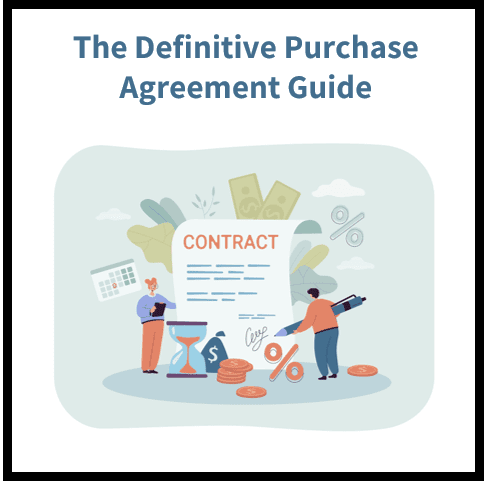A purchase agreement is a legal document that outlines the terms and conditions of a business transaction between two or more parties. In simple terms, it’s an official document that finalizes the conditions or rules under which an asset will be transferred from one party to another. While there are many variations based on industry and asset type, all purchase agreements have common key elements.
For example, they typically include information on the parties involved, the asset being purchased, price, payment schedule and conditions for transfer of title. If you are selling real estate or another business asset, setting up a purchase agreement ahead of time can avoid costly misunderstandings after your deal has been signed. This article is meant to serve as a guide in creating your own customized purchase agreement that meets your specific needs and requirements.
How to Establish a Purchase Agreement
As with any other contract, the first step in establishing a purchase agreement is to decide what type of agreement you will be entering into. It is important to understand that the type of agreement used will determine the types of clauses that can be included. There are three main types of agreements that are commonly used when buying or selling an asset. A non-binding letter of intent (LOI), binding letter of intent (LOI) and a definitive purchase agreement. Using an LOI is a good way of testing the waters with a prospective seller to determine if the seller is open to a certain price and terms.
It is not a binding legal document and can be used as a conversation-starter to see if the seller is interested. An LOI is basically a letter that outlines the parties involved, the asset being discussed and the proposed terms of the deal. A binding LOI is recognized in some states as an enforceable contract if both parties sign it. This type of agreement usually has a shorter term and may not have as many terms and conditions as a binding purchase agreement.
Photo Credit: https://s3.amazonaws.com/external_clips/attachments/2809845/original/AdobeStock_235330336.jpg?1568919034
The Basics of a Purchase Agreement
A basic purchase agreement will include:
– Parties involved – In a real estate asset purchase, the seller and buyer are the main parties involved. There may also be others involved such as a lender, if financing is required. However, these parties do not sign the agreement and do not have any rights under the agreement. – Asset being purchased – The purchase agreement will outline the specific asset being purchased. This includes information on any assumptions (additional assets being purchased) or exclusions (items that are specifically not being purchased). – Price – The price is the most critical factor when drafting a purchase agreement as it is the foundation of the agreement. The price can be stated as an amount, formula or a combination of both.
– Payment schedule – The payment schedule outlines how and when payments are due and what penalties may apply if they are late. – Conditions for transfer of title – The conditions for transfer of title is a critical element of the purchase agreement. It outlines the requirements that must be satisfied in order for the buyer to receive title to the asset. – Other clauses – There are many other clauses that may be included in a purchase agreement. They can cover issues such as due diligence, financing, representations and warranties, closing procedure and risk management.
Who Can Use This Agreement?
Purchase agreements are used in all sorts of business transactions. They can be used as a standard agreement for both buying and selling assets. Given the range of industries and types of assets that are often involved in these transactions, the standard agreement can be a valuable resource. If you are a business owner, real estate investor or involved in a major transaction, having a purchase agreement in your back pocket can be helpful.
If you are a real estate investor and are looking to buy a commercial or residential property, a purchase agreement can help you protect your interests. It can also be a useful tool if you are a homeowner and are planning to sell your property. If your assets are being sold as part of a probate or trust case, a purchase agreement can be used to protect all parties involved.
Seller’s Due Diligence Process
Before a seller signs a purchase agreement, they will usually perform due diligence to ensure that their asset is being purchased at a fair price. This process can be done before or after an offer is accepted. The due diligence process may involve: – An appraisal – The costs of an appraisal depend on the type of property being appraised.
For example, a commercial property appraisal may cost between $500 and $1,500, while a residential property appraisal can cost around $300. – Title search – Before the sale of a property is finalized, a title search is typically done to ensure there are no unresolved issues with the title. This can also be done after signing the purchase agreement to determine if there are any issues with transferred title.
Title Research and Representations and Warranties
A critical section of any purchase agreement is the title research and representations and warranties. The title research process is designed to find any issues with the transferred title before the seller closes and transfers the title. Title issues include: liens, judgments, pending lawsuits, and outstanding loans on the property.
Once these issues have been identified, the purchase agreement will outline how they will be handled. The parties will usually sign a representations and warranties clause wherein the seller states that they are not aware of any issues with the title. This section is often negotiated to determine what is and is not covered. For example, the seller may be able to exclude issues that were recorded before they purchased the property.
Responsibilities of the Seller and Buyer
When drafting a purchase agreement, you should always consider the responsibilities of the seller and buyer. The seller is responsible for transferring clear title to the asset being purchased. The seller is also responsible for providing any information or documents requested during the due diligence process. The buyer, on the other hand, is responsible for paying the seller according to the terms of the agreement. The buyer is also responsible for providing any information requested during the due diligence process.
Conditions to Satisfy for Asset Transfer
Another important section of any purchase agreement is the conditions to satisfy for transfer of title. The purchase agreement will outline the conditions that must be satisfied before the seller can close and transfer the title to the buyer. Conditions may include: the buyer passing a background check, obtaining financing for the purchase, passing a home inspection, and other items that are specific to the transaction.
The Importance of a Well-Crafted Purchase Agreement
While there is no one-size-fits-all purchase agreement, they all serve the same purpose. They help avoid costly misunderstandings between two parties as they negotiate the terms of a business transaction. While it is not possible to foresee every issue that may arise, having a well-crafted purchase agreement in place can help to resolve potential problems much sooner. If there are issues with the title, for example, it can be addressed in the purchase agreement.
A well-crafted purchase agreement will also include clauses that outline the conditions for transfer of title. This can help to prevent delays in the transaction. It is also important to remember that the purchase agreement is an enforceable legal document. This means that if one party breaches the terms of the agreement, the other party can take legal action. If you are purchasing real estate, having an agreement in place can help to avoid any potential issues with a title insurance company.
Title Company, Escrow and Asset Protection
It is important to note that having an agreement in place does not mean that your assets are fully protected. If you are using an escrow or title company to protect your interest, you may want to set up an indemnification clause in the agreement. An indemnification clause will protect you if the title company makes an error during the transaction. It is important to note that not all states allow this.
If you are purchasing real estate as an investment, you may want to consider adding an asset protection clause in the agreement. This clause can help to protect you against fraudulent litigation like identity theft and has become more common in recent years. It is important to consider the implications of adding these clauses to your agreement. They can often slow down the transaction, so you should make these decisions carefully.






One thought on “The Definitive Purchase Agreement: A Simple, Easy-to-Follow Guide”
Can you be more specific about the content of your article? After reading it, I still have some doubts. Hope you can help me.